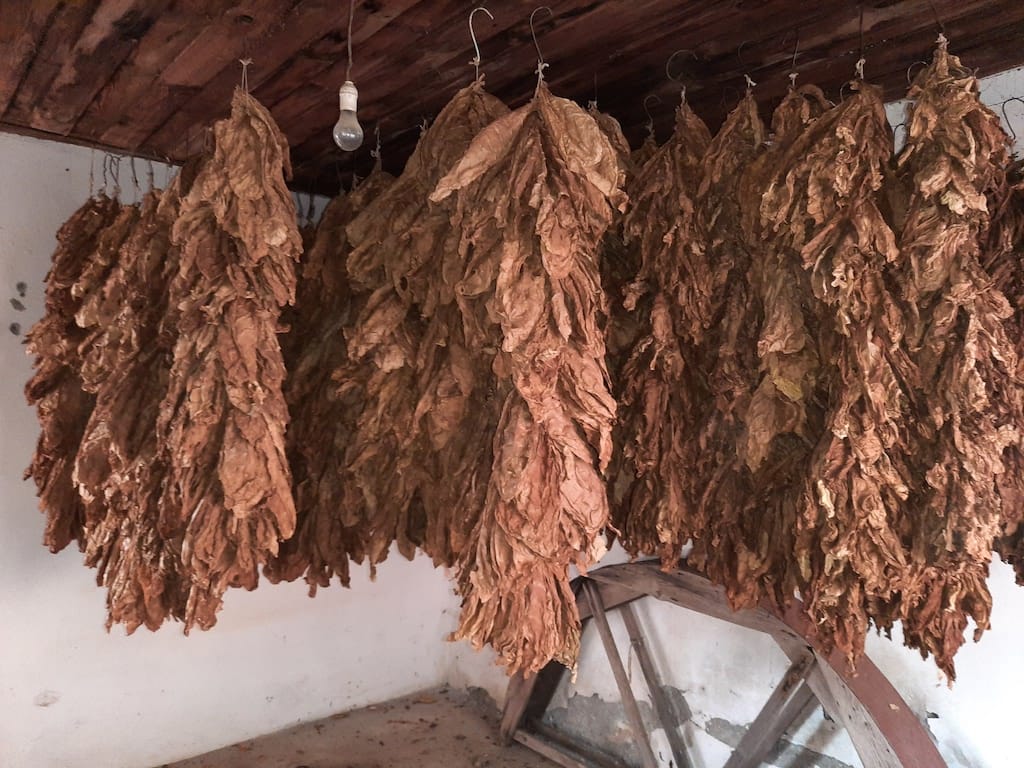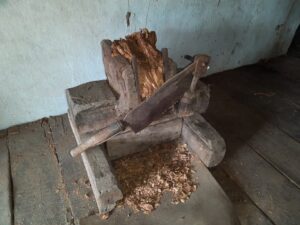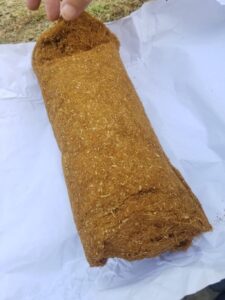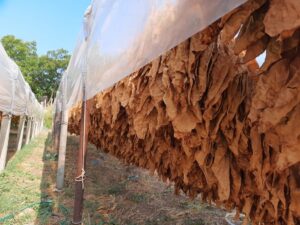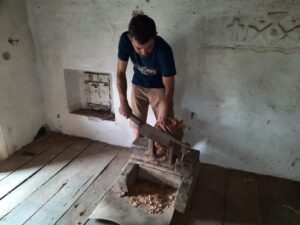In Rragam and Sheldia villages the soil is quite suitable for planting tobacco crop because it is rich in all the necessary components needed to grow this plant. A characteristic property of the tobacco crop in this area is that it remains long and clean and does not mold easily, unlike other types of field tobacco crops which are exposed to the risk of mold from humidity, sirocco, etc.
Sheldia tobacco seed is special and the farmers in the area cultivate 3 types thereof: long seed plant, which germinates and makes small leaves and goes up to 2 m high; medium seed plant makes normal leaves and goes up to 1.2 m high; and short seed plant makes bigger leaves and goes up to some 60-70 cm tall.
Medium and short seeds plant to yield the best tobacco crop. The same seed is planted each year, which farmers have kept from last year’s crop.
Another property of Sheldia tobacco is its characteristic odor which it gets from the soil which is special and distinguishes this type from all other tobacco types in the area.
The area farmers take credit for Sheldia tobacco crop as they are very skilled professionals in the cultivation and manufacturing of tobacco plants.
These components altogether, make Sheldia tobacco plant one of the best in the Albanian tobacco crop market, and highly sought-after abroad as well.
In ‘Guri i Zi’ administrative area, they say: “Sheldia tobacco is a men’s tobacco” referring to its quality.
A characteristic and distinct property of the area is also the traditional tobacco processing.
Having finished the harvesting process, the tobacco plant is placed in well-ventilated barns to undergo the drying process.
After the tobacco plant is dried in these well-ventilated barns, it is hung on tobacco sticks or laths for 30 days.
Upon the onset of rainfall and sirocco, the tobacco plant gets softer. It is then picked up and piled in bulk on adjusted entrance spaces for about 3 months. Once the tobacco has been bulked and is well conditioned, tobacco strings are watered in order to soften them on both sides. Afterward, they are placed into plastics (sacks) for about half a day. When the tobacco plant is soft enough, the string is opened up and the leaves are packed in a consecutive front-to-back pattern, and it is ready to be taken to the tobacco grinding machine and undergo the grinding process. This grinding machine consists of hewn oak logs, the tobacco nozzle assembly, and the cutting knife, which should be as sharp as possible. Once the tobacco is ready for the grinding process, it is fed into the tobacco nozzle giving a knee push forward, it is ground through the cutting knife and accordingly ready for consumption.

